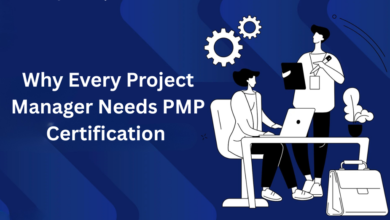
Simple SEO Tweaks That Boost Website Rankings Fast
Key Takeaways
- Small on-page SEO changes often lead to noticeable ranking improvements.
- User experience and content relevance play huge roles in modern search results.
- Data-driven tweaks can help businesses see a real impact sooner rather than later.
Why Minor SEO Changes Matter More Than You Think
Website owners often concentrate on large-scale projects and overlook the dramatic effects of minor adjustments. However, seemingly simple tweaks—like optimizing meta tags or updating existing blog posts—can significantly increase search engine visibility. Leveraging on page SEO services is a proven way to uncover these powerful, incremental improvements, making your SEO efforts smarter and more effective without an extensive overhaul. Making small, high-impact changes isn’t just a timesaver; it aligns perfectly with how search engines prioritize web pages today. Instead of pouring resources solely into time-consuming backlink campaigns, updating structural elements or cleaning up technical errors can start moving your site up the rankings in a matter of weeks. The ROI on these improvements can be surprisingly high for businesses looking for agility in their digital marketing strategy.
Getting Started With Website Analysis
Every powerful SEO journey starts with a thorough audit. Identify underlying technical issues, check for crawl errors, test mobile responsiveness, and spot slow-loading pages that might frustrate users or drive them away. Tools like Google Search Console can reveal overlooked errors or broken links, while site speed tests help highlight areas for performance upgrades. A comprehensive site analysis ensures that your SEO tweaks are built on a solid foundation, reducing the chance of missed opportunities or hidden mistakes. Don’t forget content gaps—assess whether important keywords or user topics are missing from your site. Tracking the indexing status, checking for duplicate content, and ensuring all pages are secure (using HTTPS) also sets your site up for SEO success. Consider prioritizing fixes based on how much they’ll improve the user journey—since that’s what search engines value most.
Keywords: The Secret Sauce For Quick Wins
Keyword research remains an engine of rapid SEO improvements, but today’s strategies go beyond basic repetition. Focus on intent-driven search terms that reflect what users genuinely need. Long-tail keywords naturally fit into product pages, blog posts, and FAQs, helping a broader set of queries reach your site. When deployed in headers, meta tags, and content, these carefully chosen phrases give your site an authentic boost—without feeling forced or written for robots. Writing for real people is crucial. Google increasingly rewards sites that provide clear, direct answers to user questions. Your optimization efforts will naturally yield better engagement and improved rankings by addressing pain points and goals directly in your content.
Optimizing Meta Elements For Maximum Clicks
Meta elements are a frequent missed opportunity for both rankings and user engagement. A sharply written title tag, featuring your key benefit or primary keyword near the front, often produces superior click-through rates. Don’t just optimize for algorithms—think about what makes a person want to click. Meta descriptions should be compelling summaries under 160 characters, tailored for each individual page. Unique and specific copy helps your links stand out in crowded search results. Don’t underestimate the persuasive power of well-structured header tags. Descriptive headers improve scannability for readers and help organize content for search engines. Incorporating relevant secondary keywords in these tags—while maintaining clarity—further enhances both SEO and user experience.
Streamlining Content For User Engagement
Easy-to-read, actionable content reduces bounce rates and boosts on-page time—significant signals for Google and other search engines. Break up text using bulleted lists, concise paragraphs, and frequent subheadings. Users are more likely to trust and share approachable content that answers their questions immediately, especially on mobile devices. Every page should anticipate user needs: answer the main query early on and use visuals or summaries to make complex concepts more digestible. A streamlined reading experience isn’t just good for SEO—it increases trust and helps convert visits into meaningful actions.
Interlinking: The Overlooked Strategy
Thoughtful internal linking distributes page authority and helps visitors find deeper value on your site. Rather than generic “click here” prompts, use descriptive anchor text that matches the intent of the page being linked. This not only fosters increased time on site but also encourages users to discover additional relevant resources, building both authority and trust across your entire website. Build a connected content ecosystem by linking new content to cornerstone pieces or related guides. This helps search engines map your site structure and boosts the ranking potential of your most important pages.
Quick Technical Fixes That Move The Needle
- Compressing large images to improve site speed and boost Core Web Vitals.
- Implementing structured data so search engines better understand your content context.
- Check for and eliminate duplicate content that could be diluting your rankings.
- Ensuring full mobile compatibility with a responsive design for all devices.
These “small” fixes dramatically enhance both user satisfaction and SEO. Google’s algorithm increasingly rewards fast-loading, well-optimized sites, directly connecting technical health to search ranking improvements.
Measuring And Iterating For Lasting Results
Set up a system to track the impact of your tweaks. Platforms such as Google Analytics and Search Console monitor key metrics like rankings, engagement rates, and click-throughs. Evaluate the performance of initial changes, and revisit the most effective quick wins each quarter to find further improvement opportunities. Steady, data-driven adjustments help your site stay competitive as algorithms or search trends evolve.
Treat your website as a living project. By regularly measuring, testing, and optimizing, you ensure long-term growth and continued visibility, regardless of shifts in the digital landscape.
Conclusion
Effective SEO doesn’t have to mean major upheaval. With strategic, focused tweaks grounded in research and careful measurement, even small changes can create significant growth. A site that’s fast, intuitive, and rich in relevant content consistently performs better in organic search and builds lasting relationships with visitors. Start with the essentials, work consistently, and let data inform your next steps for lasting, sustainable results.




